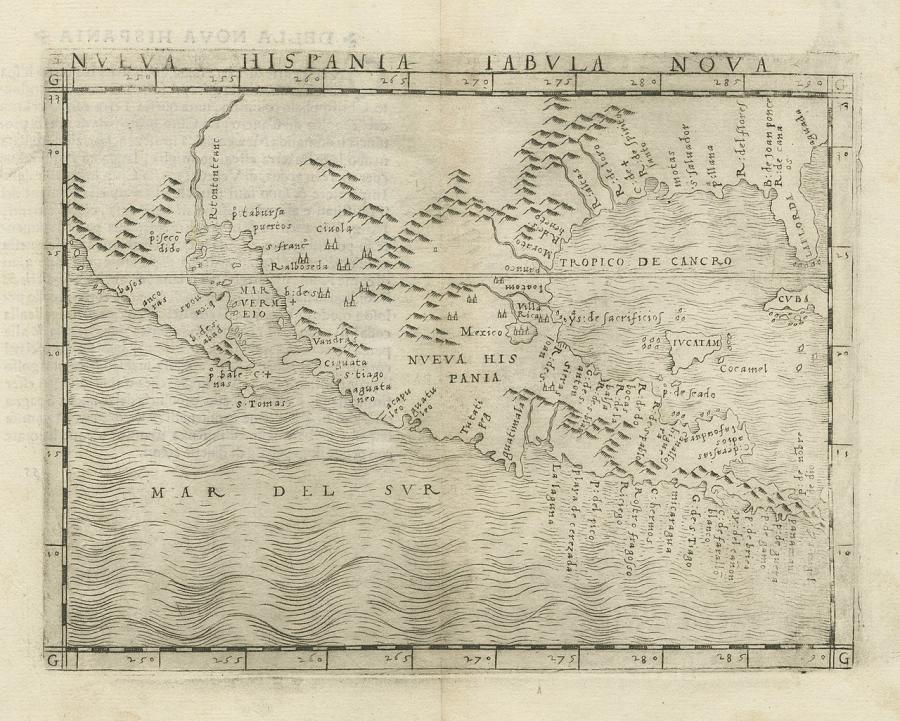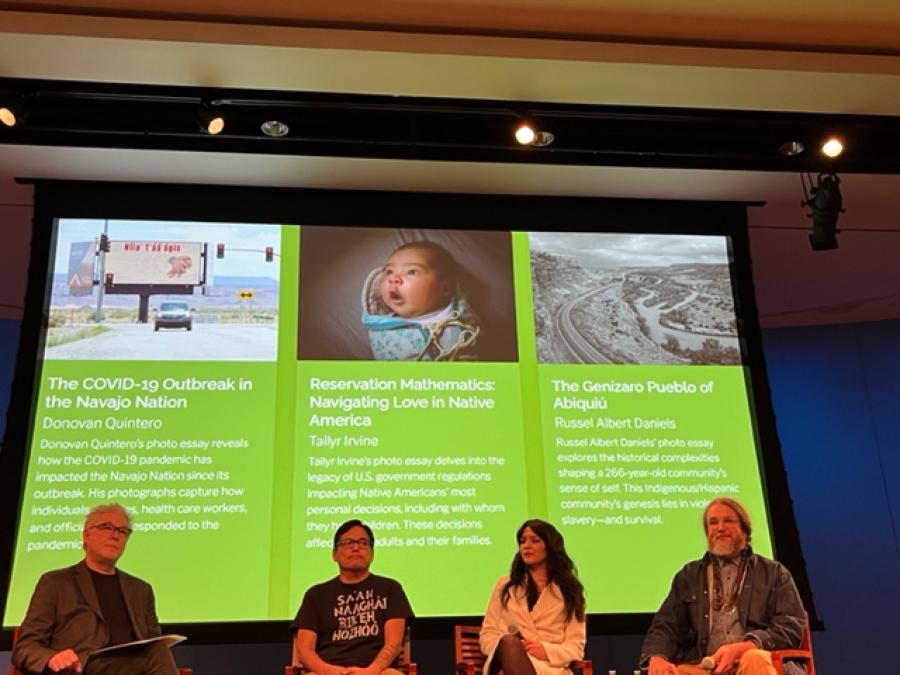When Haunani Kay Trask and Mililani Trask say that "without beautiful Hawaiian women dancing, there would be no tourism," they are talking about the major industry of their islands state. They are also talking about one of the most egregious examples in the world of the appropriation - and prostitution - of indigenous culture and women for the benefit of industrial society.
Hawaii is the last frontier of U.S. expansion. Native Hawaiians comprise 19 percent of the population of the islands and are legally entitled to 50 percent of all "state held" lands, yet they hold less than 1 percent of the land. It is not inappropriate to refer to Hawaii as a land under foreign economic and military occupation: 72 landowners hold more than 47 percent of the state, and if federal and state lands are added to the equation, these 74 control 95 percent of all the land in Hawaii. That leaves little for native Hawaiians or the rest of the people.
This text, compiled by Winona LaDuke, is adapted from an article in Indigenous Woman. It is based on interviews with Haunani Kay Trask, her speeches at such places as the UN Subcommission on Discrimination Against Indigenous Peoples, and interviews with Mililani Trask and her testimony to the Hawaii Advisory Council to the U.S. Civil Rights Commission.
Haunani Kay Trask teaches Hawaiian Studies at the University of Hawaii and is an outspoken advocate of sovereignty for Hawaii. Her sister Mililani Trasl and other natives convened a native constitutional convention in 1987 to create Ka Lahui Hawaii, a native Hawaiian sovereign nation. Since then, this native initiative for self-government has enrolled at least 10,000 Hawaiians. Mililani Trask is its elected head, the Kia'aina.
Tourists flock to our native land for escape, but they are escaping into a state of mind while participating in the destruction of a host people in a native place. To Hawaiians, daily life is neither soft nor kind. In fact, the political, economic, and cultural reality for most Hawaiians is hard, ugly, and cruel.
Today, glass and steel shopping malls with layer parking lots stretch over what were once carefully irrigated taro (the staple from which poi is made), lands that fed millions of Hawaiians over thousands of years. Large bays, delicately ringed for generations with well-stocked fishponds, are now heavily silted and polluted with jet skis, wind surfers, and sailboats. Multi-story hotels flood over six million tourists onto our beaches annually, closing them off to locals.
The true impact of tourism on the Hawaiian people and the land is devastating. Tourism is the single largest source of new residents to Hawaii, as many of those tourists return to stay. Thirty years ago, at statehood, Hawaii residents out-numbered tourists by more than two to one. Today, tourists outnumber residents six to one, and they outnumber native Hawaiians thirty to one. On a worldwide scale, Hawaii has the greatest projected expansion of tourism, as the state anticipates a tidal wave of 12 million tourists annually by the year 2010. Hawaii ranks sixth in the world in tourist visits, with most of them coming from Japan and North America.
The problem is that we are an island, and there is only so much land to go around. Hawaii has the lowest rate of owner-occupied housing in the nation outside New York and probably the tightest rental market anywhere. Those who purchase homes have a per-capita income 370 percent higher than the average Hawaiian.
But the real scandal of Hawaii is the dispossession of the native people. In 1920, the United States provided 200,000 acres for homesteading of native Hawaiians. This was done through the Hawaiian Homes Act. In 1959, at statehood, the U.S. government provided 1.4 million acres of ceded land to the state for public use and to "better the conditions of native Hawaiians."
Since 1920, the state has settled fewer than 6,000 natives on their homestead land - 72 years of delay. Since 1959, the state has refused to provide a single acre of ceded land to Hawaiians.
For decades, the Hawaiian people have fought this dispossession, through courts, through continuing to practice their spiritual beliefs, through active reclamation of lands, and through constant occupations. Hawaiians have "occupied" trust lands, built homes, and lived on beaches. The state has evicted them, destroyed and burned their homes. Some occupations have occurred because our people were homeless; some have been planned political occupations. Hawaiian people have fought to protect the rain forest of the major island, Hawaii, from exploitation - more plants and animals from Hawaii are now extict or on the endangered species list than from all the rest of the United States.
AN ORNAMENTAL HOAX
Tourism is not here to sell haole (white) culture. It is here because we are the native people of this aina (land). It is our culture the tourists come to see. It is our land the tourists come to pollute. Without beautiful Hawaiian women dancing, there would be no tourism.
Tourism deforms culture to the point of cultural prostitution. When I say prostitution in this context I refer to the entire institution that defines a woman as an object of degraded and victimized sexual value for use and exchange through the medium of money. Examples in Hawaii are the prostitution of the land and things Hawaiian and the prostitution of women's roles.
Hawaii is itself the female object of degradation. Our aina are no longer the source of food and shelter, but rather the source of money. Land is now called real estate, rather than papa, our word for mother. Beautiful areas, once sacred to my people, are now expensive resorts. Now, even access to beaches and near hotels is strictly regulated or denied to the local people altogether.
High schools and hotels funnel teenagers from kitchens to gardens to honeymoon suites in preparation for jobs in the state's lowest-paid industry. Tourism displaces Hawaiians, and those who work do so at the lowest level. According to David Standard, who teaches American studies at the University of Hawaii, "A family of four with one full-time, average-pay hotel worker at its head lives permanently mired in an official state of poverty. To live in the U.S. government's generous definition of intermediate standard of living, that family of four will have to hold more than three such full-time jobs. The tourist industry, in fact, is not for the Hawaiians."
In the meantime, the state Department of Education distributes tourist-appreciation kits and movies. One film, unashamedly titled "What's In It for Me?" was devised to convince locals that tourism is "The Aloha Industry" - the golden future for everyone.
The commodification of Hawaiian culture includes marketing native values and practices on hole terms. These talents, in Hawaiian terms, are the hula, the aloha - generosity and love - of our people, the u'i or youthful beauty of our men and women, and the continuing allure of our lands and waters. Tourism converts these attributes into profit.
Hula dancers wear clown-like makeup, don costumes from a mix of Polynesian cultures, and behave in a smutty manner, rather than in a powerfully erotic manner. The hula is erotic because it depicts the energy of the life force - in the earth and among the people of the earth. This life force or mana (energy) is sensual and fecund. In the hotel version of the hula, the sacredbness of the dance has disappeared and been replaced with an ornamental hoax.
Hawaiian women dance with Hawaiian men at "lu'aus" for a lavish "island" buffet and "thrilling" Polynesian revue. Needless to say, Hawaiians don't participate, and didn't participate in such things before the advent of haoles in the islands. The woman has an innocent look and is portrayed as a costumed maiden who is virginal yet enticing to the haole tourists. In the native tradition, the hula was performed: 1) as a Mohai (sacred offering); 2) to transmit knowledge as a component of the oral traditions; and 3) as a vehicle for providing social and cultural cohesion. Tourism ponders sexuality through the hula - it commodities the hula for the lurid gratification of the haole.
The Hawaiian man, on the other hand, is supposed to convey an image of both virility and threat. The white women in the audience can marvel at his physique and still remain safely distant. He is, like a black American male, a fantasy animal. The men, too, are, in truth, prostituted for tourism.
UNDOING IMAGES
Tourism deforms the culture so much that many young Hawaiians grow up thinking that our culture is a haole interpretation of culture - to dance the hula is to dance for tourists...and if you smile real nice, some haole is going to take you out. This image is widespread throughout tourist literature. The point is that everything in Hawaii "can be yours" - the place, the people, the culture, and even in identity as native is for sale.
We are working to undo this image. As Hawaiians, one of the first steps is to look at it ourselves and think about the impact of tourism on our culture. Unfortunately, many of our people, and Hawaiian women in particular, don't agree that tourism prostitutes our culture. This is a measure of the depth of our mental oppression: we can't understand our own cultural degradation because we are living it. When awareness begins, so, too, does decolonization.
Judging by the growing resistance to new hotels, to exploiting the islands' geothermal energy, and to manganese nodule mining, decolonization has begun. But we have a long way to go. We also need to educate others and join with them. This problem is not unique to Hawaii. It is suffered by peoples as far away as Tahiti and the southwestern United States. Tourism is not a neutral industry, and native people on the mainland should be wary of its ways. And, as indigenous women, we need to look at it especially carefully.
Article copyright Cultural Survival, Inc.



